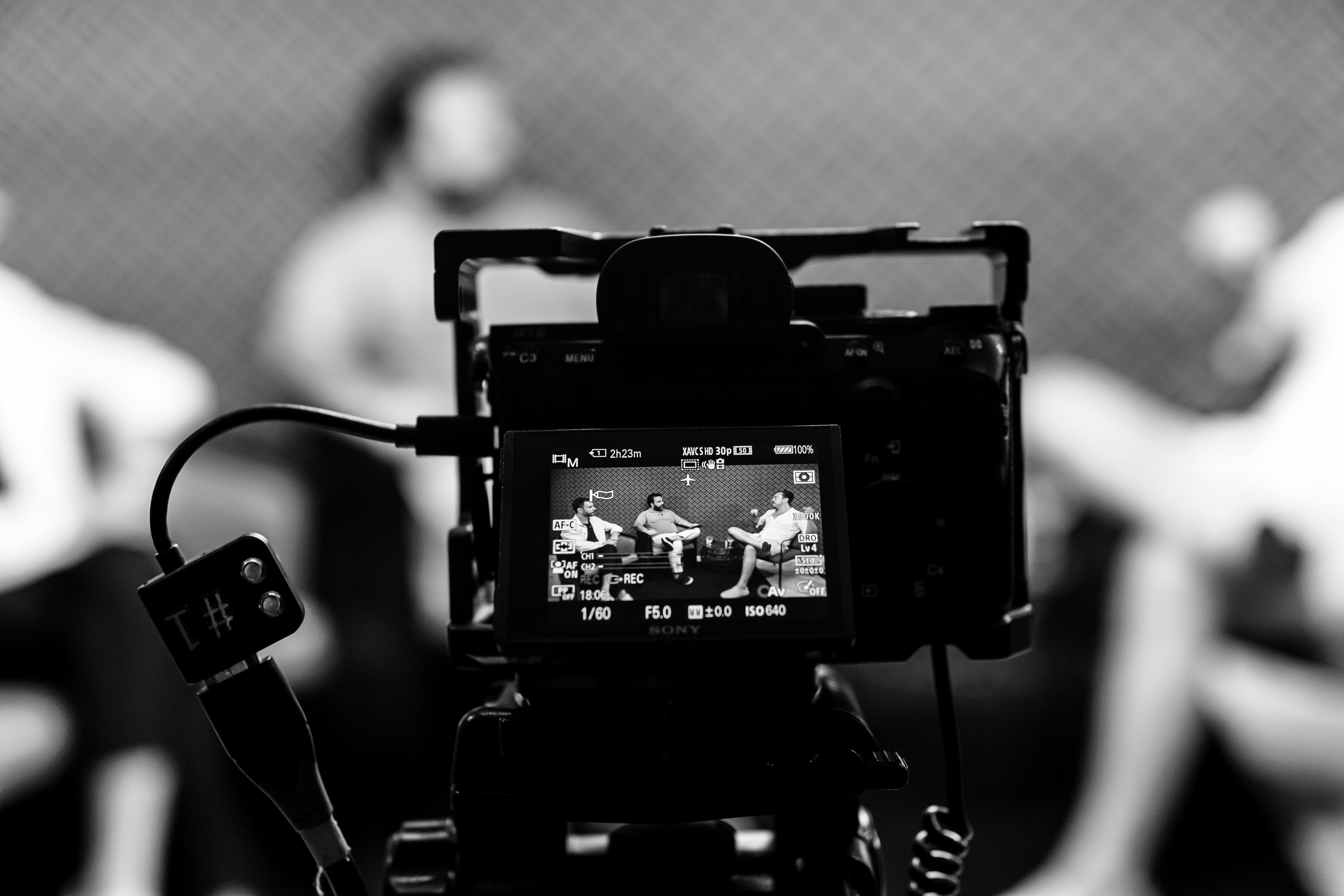What Is Media Bias and How Does It Affect You?
by WriteSeen
Media bias is the tendency within media outlets to slant news coverage toward particular narratives or ideologies, rather than delivering just the facts. It's about perception, shaping public opinion subtly or overtly.
Understanding media bias is essential for creators and consumers who want to navigate today's information landscape without falling into echo chambers. This article uncovers the history, types, and impact of media bias while offering tools to spot and counter it.
Historical Context of Media Bias
Media bias isn’t just a modern challenge; it traces back centuries. Recognizing its roots helps us understand its evolution and impact on how we process information today. Media began as a means of political advocacy in the 18th century when newspapers served as mouthpieces for political parties. Moving into the 20th century, broadcast media claimed neutrality but wasn't immune to bias as channels leaned toward narratives that favored their stakeholders. In today's digital age, algorithms create echo chambers by feeding users content that reinforces their existing beliefs, amplifying selective narratives.
- Newspapers served as party-affiliated publications, advocating specific political views.
- The rise of yellow journalism introduced sensationalism and contributed to misinformation.
- The Fairness Doctrine, in effect from 1949 to 1987, aimed to maintain balance by requiring broadcasters to present contrasting viewpoints.
- Digital platforms fine-tune content delivery, promoting stories that align with user preferences, often at the expense of diverse perspectives.
Understanding these phases of media bias reveals patterns. It shows how media, shaped by its era, consistently oscillates between storytelling and advocacy.

Types of Media Bias
Let's turn the spotlight onto the various types of media bias, each with its unique influence: Political, commercial, sensationalist, cultural, gatekeeping, and confirmation bias. Knowing these forms helps us identify bias and shape how we engage with content.
Political Bias
Political bias manifests when coverage sways to favor certain ideologies or figures. Outlets might spotlight policies of one political faction, downplaying others.
Commercial Bias
Commercial bias happens when media content caters to advertisers or sponsors. Coverage might skew to please financial backers, prioritizing content that boosts viewership.
Sensationalist Bias
This bias enthrones drama over accuracy. Stories are exaggerated to attract eyeballs, often distorting facts to heighten emotions.
Cultural Bias
Dominant cultural narratives often receive greater focus, while minority perspectives suffer from neglect. This bias can shape public perception by normalizing some cultural norms over others.
Gatekeeping and Confirmation Bias
Gatekeeping bias controls which stories reach audiences. It's the selective showcasing of events or viewpoints. Confirmation bias, on the other hand, feeds audiences narratives that confirm pre-existing beliefs, often overlooking contradictory information.
By identifying these biases, creators and consumers of content can challenge narratives, seek balanced views, and foster informed discussions.
Structural and Non-Ideological Biases
It’s not always about political allegiance; the framework of media organizations can create biases too. Ownership, business models, and technologies are invisible players shaping media landscapes.
- Ownership bias occurs when media aligns with the interests of stakeholders, potentially skewing narratives.
- Market pressures drive outlets to prioritize stories that attract higher ratings and revenues over less popular, yet significant stories.
- Algorithms personalize content by analyzing user behavior, often reinforcing existing biases to maintain engagement.
- Economic bias leans towards profit-driven narratives, occasionally compromising depth and impartiality.
Understanding these biases highlights the significance of scrutinizing the structures and incentives behind media production. This scrutiny empowers creators and consumers to redefine content norms, making room for balanced and diverse perspectives.
Impacts of Media Bias on Public Perception
The interplay of media bias with public perception is powerful. It doesn't just shift opinions; it polarizes, misinforms, and sometimes, erodes trust. Recognizing these impacts enables us to critically assess the information we encounter.
Polarization and Division
Media bias often magnifies political divides. People align with outlets echoing their views, leading to echo chambers and fragmented opinions.
Misinformation and Public Misconceptions
Bias feeds misinformation and distorts truths, steering public decisions on critical issues like elections and public health.
Eroding Trust
With bias as a constant undercurrent, trust in media suffers. This erosion reduces the credibility of genuine reporting, impacting informed decision-making.
Understanding these impacts doesn’t only shed light on current challenges; it also paves the way for a more discerning engagement with media. Readers can reimagine their role, seeking truth amid narrative clutter. With platforms like WriteSeen, creators collaborate to challenge biases, create inclusive content, and inspire both trust and informed awareness. Leveraging secure and transparent processes, WriteSeen supports creators in showcasing diverse voices, thereby fostering enriched perspectives and balanced narratives.

Trust in Media: Why It Matters
Media trust is the backbone of an informed society. It not only affects how we interpret news but also influences democratic processes. As creators and consumers, understanding why trust in media matters is crucial.
Evolving Trust Landscape
With perceived bias and misinformation, trust in media is declining. This shift impacts the reliability of news and how society engages with critical issues.
The Role of Credibility
Maintaining credibility ensures that audiences receive factual and balanced information. When information sources lack trust, the line between fact and opinion blurs, influencing public decisions and societal cohesion.
Rebuilding Trust
Restoring trust involves transparency, accountability, and adherence to ethical journalism. Media outlets and creators can regain credibility by fact-checking, acknowledging errors, and providing balanced reporting. For creators using platforms like WriteSeen, this is a call to action—to prioritize authenticity and factual narratives in their work. The result is a content landscape where audience confidence grows, fostering public engagement and informed dialogue.
Efforts to Correct and Identify Media Bias
Spotting and addressing media bias isn't just beneficial; it's necessary. Understanding these efforts helps creators and consumers engage with information more critically and constructively.
Fact-Checking and Accountability
Fact-checking platforms and media watchdogs are essential. They call out inaccuracies, ensuring that outlets uphold high reporting standards—a step essential for creators aiming to produce credible content.
Algorithmic Interventions
Algorithms now play a role in identifying biased language or reporting trends. Although not without controversy, they offer a way to highlight potentially biased narratives and encourage balanced storytelling.
Promoting Media Literacy
Media literacy programs empower individuals to critically analyze content, improving their ability to detect bias. By equipping audiences with these skills, creators and educators foster informed communities.
Initiatives for Transparency
Projects like the Trust Project advocate for clarity in journalism. These initiatives highlight ethical practices, offering audiences context and credibility in the stories delivered.
Understanding and engaging with these efforts equips creators on platforms like WriteSeen to produce content that challenges traditional biases and elevates authentic voices. It allows creators to push for inclusive storytelling that represents diverse perspectives, enhancing trust and credibility.
Role of WriteSeen in Promoting Unbiased Creativity
At WriteSeen, we believe in the power of creativity to transcend bias. Our platform provides a unique environment for creators to develop work that's both original and authentic.
Encouraging Diverse Perspectives
WriteSeen thrives on a blend of voices. By connecting writers, artists, and industry professionals from diverse backgrounds, we ensure a rich tapestry of perspectives that counter monolithic narratives.
Fostering Transparent Collaboration
Transparency is key. WriteSeen facilitates secure storage and timestamping, ensuring every idea and collaboration is grounded in trust and ownership.
Championing Balanced Narratives
By providing a distraction-free space, we magnify the creativity and voices of our community, elevating narratives that are inclusive and multidimensional.
WriteSeen isn't just about creating content—it's about nurturing unbiased creativity that resonates with integrity. Through a collaborative spirit, we're redefining what it means to engage meaningfully with the media landscape.
Conclusion
Media bias shapes not just what we consume but how we think. From historical roots in political advocacy to today’s algorithm-driven echo chambers, its influence has shaped narratives and guided public opinion. By studying its forms—whether political, commercial, or cultural—we begin to reclaim our ability to think independently and challenge the status quo.
Creators today have the power to reshape that landscape. By resisting sensationalism and embracing ethical storytelling, they can foster more inclusive and credible media. That means crafting content that's informed, transparent, and trustworthy—work that doesn't just inform but uplifts and inspires honest dialogue in the process.
At WriteSeen, we support creators committed to that mission. Through secure collaboration tools and a distraction-free creative space, our platform encourages voices that prioritize integrity over influence. Join WriteSeen today and help redefine the future of media—one balanced story at a time.
TAGS